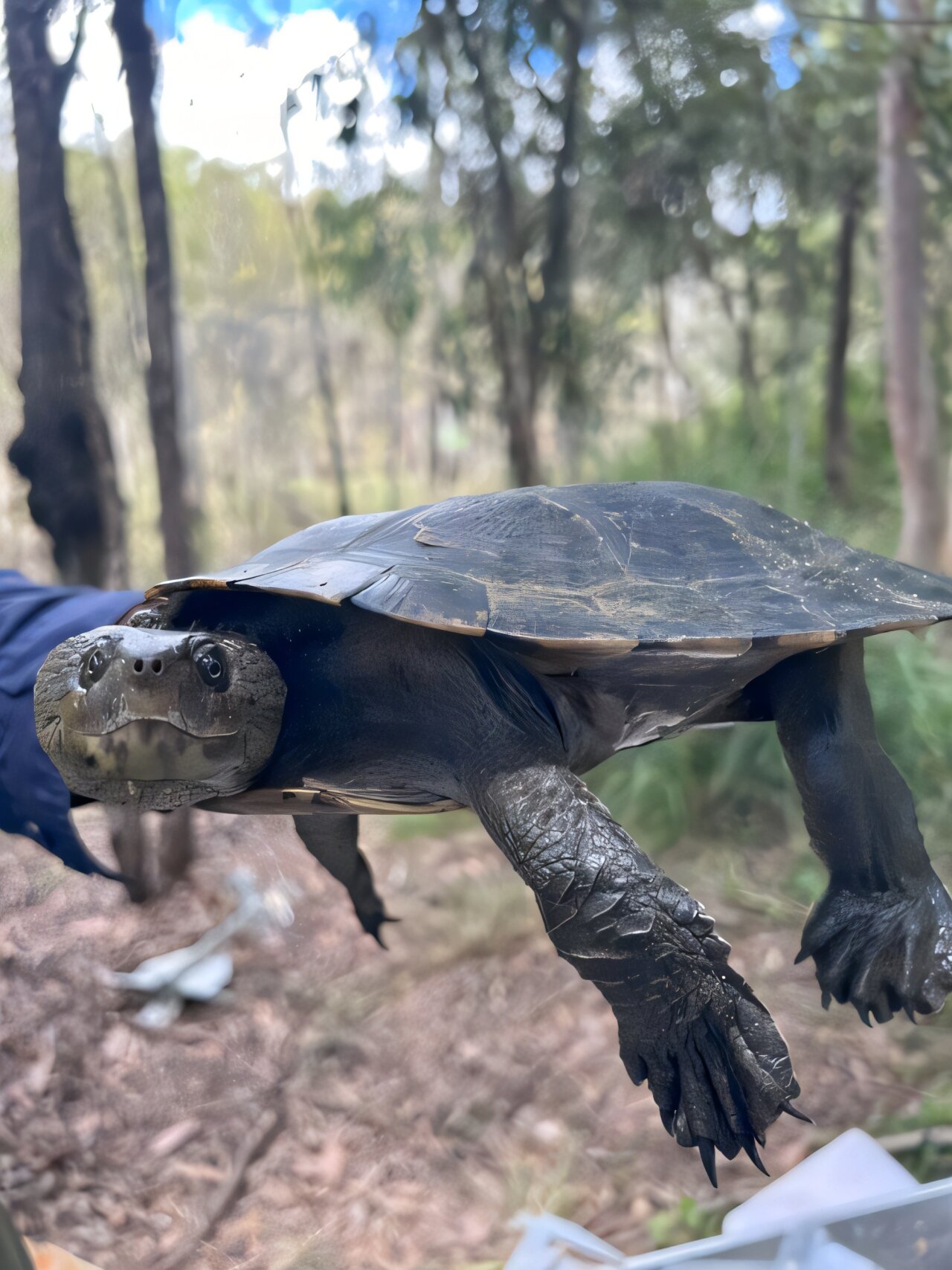A study in Science of the Total Environment has measured concentrations of PFAS—also known as forever chemicals—in Australian wildlife, following an analysis of freshwater turtle (Emydura macquarii macquarii) populations in Queensland.
The joint study by CSIRO, Australia’s national science agency, and the Queensland Department of the Environment, Tourism, Science and Innovation (DETSI), discovered biochemical changes to adult turtles and their hatchlings, and observed population decline.
Dr. David Beale, Senior Research Scientist at CSIRO, said major health impacts were observed in wildlife at sites with high concentrations of PFAS.
“Exposure to high concentrations of PFAS impacted essential metabolic processes in the turtles sampled. Adults had a high potential of forming gout, which is deadly in reptiles,” Dr. Beale said. “We found that eggs had altered ratios of essential minerals, and hatchlings had a high rate of defects in their shells.”
Dr. Suzanne Vardy, Principal Scientist at DETSI, said researchers captured, measured, tagged, and released around 350 freshwater turtles, as part of their three-year investigation.
“PFAS concentrations were detected up to 30 times higher in the blood and organs of turtles from the highly contaminated area, compared to control sites where there were low levels of PFAS in the water,” Dr. Vardy said. “When we looked at the population, we found that there was a lack of juveniles at the more contaminated site. Our models predicted that over time, these impacts could result in a population collapse.”
The research made use of omics-based tools, which are advanced techniques used to assess thousands of molecules within an organism to find out how it has responded to a contaminant or disease.
These tools offer a holistic insight into animals’ metabolism—the life-sustaining chemical reactions which turn food into energy.
Dr. Beale said when we go to a GP and get a blood test, that gives us around 30 biochemical markers, which tell us how our current health is and what it might look like in the future.
“We’re applying the same approach to wildlife, doing a deep analysis on thousands of biochemical molecules, proteins, and lipids to understand the trajectory of their health in these contaminated environments,” he said.
“This revolutionary approach has allowed researchers to draw the link between levels of PFAS contamination and impacts on animal health. It lays the groundwork for omics-based techniques to be used in future research assessing how PFAS affects a range of biological processes in Australian wildlife.
“We set out to better understand the impacts on our wildlife, where PFAS are accumulating in the environment.”
PFAS occurs in a range of consumer, industrial, and commercial products, such as non-stick food packaging and cookware, and legacy firefighting foams which the Queensland Government began phasing out in 2016—the first state or territory in Australia to do so.
The chemicals can leach into soils and groundwater, travel long distances, and do not fully break down naturally, giving them their moniker of “forever chemicals.”
DETSI is undertaking a range of regulatory activities to manage PFAS, including taking part in an interdepartmental committee, supporting research into ways of removing PFAS from the environment, and collaborating with other government agencies to provide a coordinated response to managing PFAS in Queensland.
With peer-reviewed animal ethics approval, a small number of turtles were euthanized for the study. The research builds on previous studies that conducted blood tests on about 100 turtles. Researchers ensured the turtles were released back into their habitat as safely and quickly as possible.
Citation:
Uncovering health impacts of forever chemicals on freshwater turtles (2024, November 11)
retrieved 12 November 2024
from x67
This document is subject to copyright. Apart from any fair dealing for the purpose of private study or research, no
part may be reproduced without the written permission. The content is provided for information purposes only.
